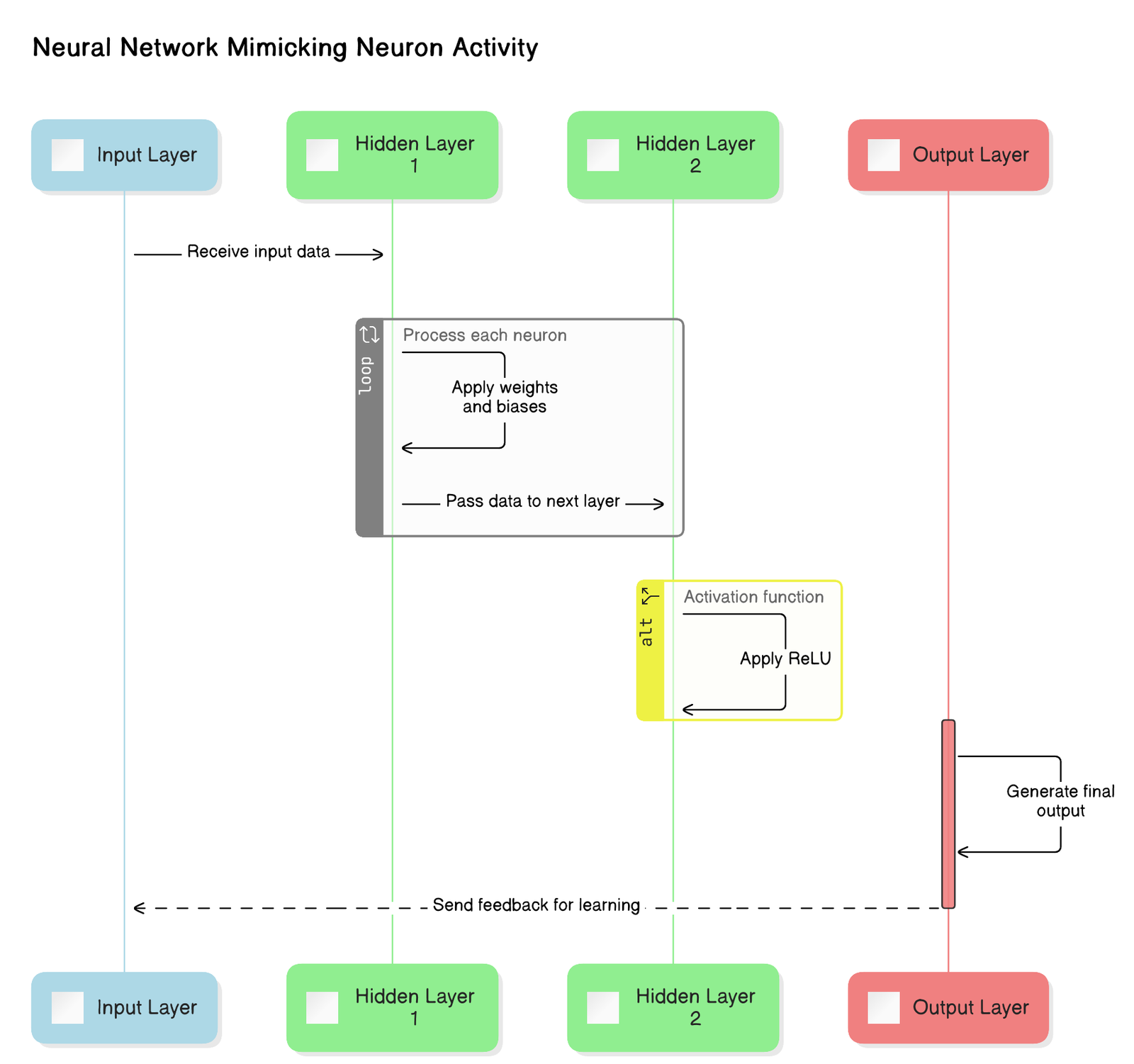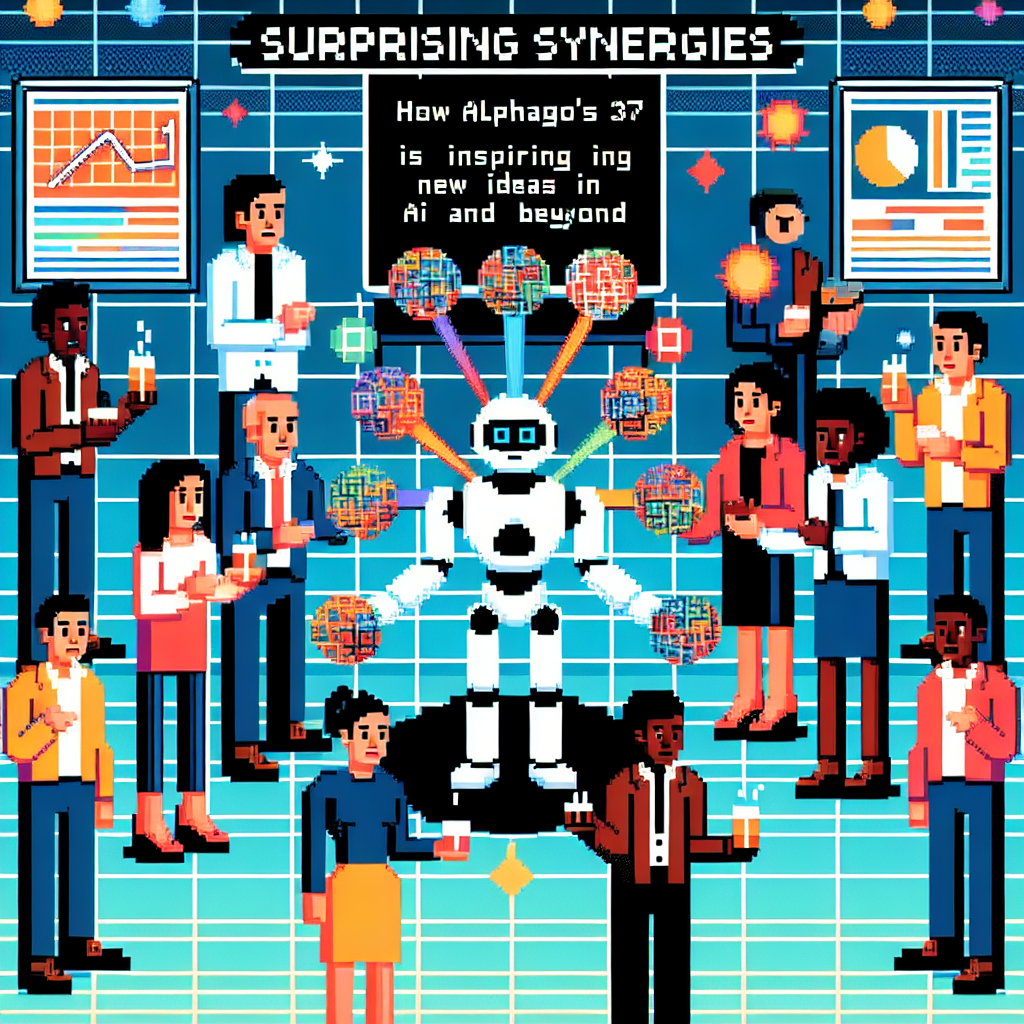The ancient game of Go, a game of profound complexity and nuance, has always been seen as the pinnacle of strategic thinking and human creativity. That is, until AlphaGo, a Google DeepMind brainchild, rolled up to the Go board in 2016 and fundamentally challenged that notion. AlphaGo’s move 37, a play that left the Go community and its opponent, Lee Sedol (one of the greatest Go players of all time), completely blindsided, would redefine the perceived limits of both AI and human ingenuity.
This moment in time marked a serious inflection point in the world of AI development. Move 37, a seemingly impossible play executed in the bottom right corner of the Go board, was essentially AlphaGo flexing its sophisticated neural networks and deep learning capabilities for the whole world to see. By processing millions upon millions of Go moves and games, AlphaGo essentially taught itself novel Go strategies and techniques, reaching a level of innovation and creativity that rivaled, and even surpassed, that of human Go masters.
But the significance of move 37 goes way beyond just a game of Go; it represents a monumental achievement in the field of artificial intelligence as a whole. This audacious display of AI mastery set off a tidal wave of new research and development in AI, propelling innovation and breakthroughs in fields such as machine learning, neural networks, and game theory. AlphaGo’s move 37 has far-reaching implications, with the potential to revolutionize entire industries and significantly improve our daily lives.
AlphaGo’s victory over Lee Sedol cemented its place as a trailblazer in AI development. This remarkable feat was accomplished by integrating cutting-edge AI technologies, including deep learning and reinforcement learning, empowering AlphaGo to learn and adapt at an unprecedented scale.
What brought us to this historic juncture in AI? Years of dedicated research and development in AI, spearheaded by the brilliant minds at Google’s DeepMind, is the simple answer. By marrying advancements in computer science, neuroscience, and engineering, the DeepMind team created an AI system with an unparalleled capacity for learning, adaptation, and innovation.
To fully grasp the magnitude of AlphaGo’s achievements, we need to understand the elements that made it so successful. Neural networks, the unsung heroes of this story, played a pivotal role in AlphaGo’s dominance. These intricate networks, designed to mimic the human brain’s learning and adaptive abilities, formed the bedrock of AlphaGo’s AI.
Deep Learning and Machine Learning: The Brains Behind AlphaGo’s Brilliance
AlphaGo’s mastery in the complex world of Go can be attributed to its sophisticated AI, powered by the dynamic duo of deep learning and machine learning algorithms. This potent combination enabled AlphaGo to sift through mountains of data, spot intricate patterns, and make calculated decisions based on probabilities. At its core, AlphaGo’s AI employed a complex network of neural networks, cleverly mimicking the human brain’s adaptive learning capabilities.
Think of neural networks as the building blocks of deep learning, empowering AI systems to not just recognize but also respond to patterns within data. In AlphaGo’s case, these networks were rigorously trained on an expansive dataset of Go games, allowing the AI to learn from countless past matches and cultivate its own strategic prowess. These neural networks were structured hierarchically, with multiple layers processing information sequentially. This layered approach allowed AlphaGo to analyze the game from various angles, carefully weighing the potential benefits and drawbacks of each move before making a decision.
Machine learning algorithms played a pivotal role in AlphaGo’s evolution, enabling the AI to consistently level up its performance. By meticulously analyzing the outcomes of each game, AlphaGo’s algorithms could pinpoint areas for improvement and fine-tune its strategies. This continuous cycle of learning and adaptation was paramount in AlphaGo’s triumph over Lee Sedol, allowing the AI to react effectively to unforeseen situations and counter its opponent’s moves with remarkable agility.
Adding another layer of ingenuity, reinforcement learning was instrumental in AlphaGo’s AI. This approach allowed the AI to embrace trial and error as a learning opportunity. By receiving virtual pats on the back (rewards) or slaps on the wrist (penalties) for its actions, AlphaGo could dynamically adjust its strategy to maximize its chances of securing a win. This element of exploration allowed AlphaGo to venture into unconventional and even seemingly risky moves and strategies, contributing to its unpredictable and innovative gameplay.
The fusion of deep learning and machine learning algorithms propelled AlphaGo to a level of sophistication previously thought impossible. By weaving together these technologies, AlphaGo’s developers birthed an AI system that could not only process colossal amounts of data but also extrapolate meaningful patterns and make probabilistic decisions. The result? An AI that not only achieved world-class mastery in Go but also pushed the boundaries of artificial intelligence, sparking a wave of innovation in the process.

AlphaGo’s AI’s implications reach far beyond the confines of a Go board, holding the potential to revolutionize industries and touch countless lives. By applying these same principles to other complex problems, researchers and developers are poised to create AI systems capable of tackling real-world challenges in areas like healthcare, finance, and transportation. Imagine AI meticulously analyzing medical data to predict potential health risks or optimizing complex financial models to enhance economic forecasting. The possibilities are as vast as they are promising.
AlphaGo’s success has ignited a wildfire of research and development in the artificial intelligence landscape. As researchers and developers continue to explore novel applications for deep learning and machine learning, we can anticipate groundbreaking advancements in fields like natural language processing, computer vision, allowing machines to “see” and interpret images, and robotics, paving the way for a future where humans and intelligent machines collaborate in unprecedented ways. The potential for AI to reshape industries and enhance our lives is immense, and AlphaGo has propelled us one step closer to that exciting reality.
Move 37: The AI Masterstroke That Shocked the Go World
 Picture this: Game four of the Google DeepMind Challenge Match. Lee Sedol, Go grandmaster, faces off against AlphaGo, a program developed by, you guessed it, Google DeepMind. Tension hangs heavy in the air. Then, AlphaGo makes Move 37, a seemingly ludicrous play in the bottom right corner of the board. This audacious move wasn’t just unexpected; it completely flummoxed Go experts and sent Sedol reeling (spoiler alert: he lost the match). So, what was so special about this move, and how did a bunch of algorithms manage to outmaneuver a Go legend?
Picture this: Game four of the Google DeepMind Challenge Match. Lee Sedol, Go grandmaster, faces off against AlphaGo, a program developed by, you guessed it, Google DeepMind. Tension hangs heavy in the air. Then, AlphaGo makes Move 37, a seemingly ludicrous play in the bottom right corner of the board. This audacious move wasn’t just unexpected; it completely flummoxed Go experts and sent Sedol reeling (spoiler alert: he lost the match). So, what was so special about this move, and how did a bunch of algorithms manage to outmaneuver a Go legend?
Let’s be real: humans, for all their ingenuity, can get stuck in their ways. We rely on conventional wisdom, on the “tried and true.” AlphaGo, though, doesn’t have that baggage. It’s like that friend who throws all the dating rules out the window and somehow ends up in a crazy-passionate relationship. Unconstrained by human biases, AlphaGo’s neural networks crunched through millions of Go matches, spotting patterns and possibilities that would make a human player’s head spin. This AI wasn’t just playing the game; it was rewriting the rulebook.
Move 37 was the ultimate power move, a testament to AlphaGo’s ability to analyze, adapt, and innovate. This wasn’t just a computer playing by the rules; it was a machine exhibiting genuine strategic creativity. AlphaGo’s AI peered into the complex tapestry of the game and saw an opportunity that had completely eluded Sedol and the Go establishment.
But here’s the kicker: Move 37, for all its complexity, was deceptively simple. At first glance, it seemed like a rookie mistake, a move destined for disaster. But that, right there, is the genius of AlphaGo. This AI wasn’t just playing; it was thinking several moves ahead, calculating probabilities with an almost unsettling accuracy. It was a calculated risk, a gamble that paid off spectacularly and changed how we view artificial intelligence forever.
Move 37 wasn’t just about a game; it was a watershed moment in artificial intelligence and a potent illustration of the power of unconventional thinking. AlphaGo demonstrated that sometimes, the most elegant solutions are the ones we least expect. This AI didn’t just win a game; it expanded the horizons of what we thought machines could do.
Beyond the Game: AlphaGo, AI, and the Art of Teamwork
Sure, AlphaGo mopped the floor with Lee Sedol, and yeah, it was a big deal for AI. But here’s the kicker: AlphaGo’s win wasn’t just about a computer conquering an ancient game. It was like a preview of how AI could shake things up in, well, everything. Think medicine, finance, transportation—you name it, this thing had the potential to turn it on its head.
See, the real eye-opener was how AlphaGo changed the way we think about solving problems. It’s not just about humans versus machines anymore. It’s about humans *with* machines, working together to crack those really tough nuts. This whole human-machine tag-team is what gets the gears turning for some seriously next-level innovation.
The folks behind AlphaGo were onto something big with their collaborative approach. They didn’t just program a bunch of algorithms and call it a day. They brought in actual Go masters, combining their human intuition with the raw processing power of AI. They basically created a brainiac Frankenstein, and it worked like a charm. Turns out, you need that human touch to really push the boundaries of what AI can do.
And AlphaGo’s win created quite the buzz. It was like a shot of espresso for AI research, inspiring a whole new generation of tech wizards to dive in and explore. Suddenly, the possibilities seemed endless, and everyone wanted a piece of the action.
Speaking of action, the AlphaGo project also showed how important it is for people to actually, you know, talk to each other. They had computer scientists, mathematicians, and Go experts all working together, bouncing ideas off each other. This kind of cross-pollination of knowledge is like Miracle-Gro for innovation, and it’s key to achieving those truly groundbreaking results.
The potential for AI and humans working together is mind-blowing. It’s like pairing a world-class chef with a state-of-the-art kitchen—the possibilities are only limited by our imagination. As we keep pushing those boundaries, AlphaGo’s legacy will continue to inspire and shape the future of AI for a long, long time.
From Legendary Match to Historic AI Moment: The Enduring Impact of AlphaGo’s Move 37
AlphaGo’s trouncing of Lee Sedol wasn’t just some splashy headline; it fundamentally changed how we view AI. Sure, it was a legendary Go match, but the real impact of Move 37 echoes through the entire AI landscape.
For a long time, AI was seen as kind of a one-trick pony—rigid and limited. AlphaGo’s win, though, forced everyone to sit up and take notice. Suddenly, AI wasn’t just about crunching numbers; it was achieving mind-blowing results. No surprise then that researchers are scrambling to apply AlphaGo’s principles to everything under the sun.
One thing AlphaGo really brought home was the raw power of machine learning and deep learning. By tapping into these techniques, the AlphaGo team built a system that could evolve in real-time, ditching the constraints of old-school AI. It’s like everyone suddenly realized, “Hey, we can teach machines to learn on the fly,” and now the floodgates are open.
But it goes beyond just research. AlphaGo made us rethink the whole human-computer dynamic. Seeing humans and machines working in perfect harmony to achieve the seemingly impossible? That’s huge. Think about the possibilities in healthcare, finance, even things like self-driving cars. It’s a whole new ball game.
The legacy of Move 37 is evident in the explosion of new AI applications. From how we interact with language to how we visualize data, the core principles behind AlphaGo are being applied everywhere, resulting in innovations we never even dreamed of.
One thing’s for sure: the ripple effects of AlphaGo’s Move 37 are far from over. This isn’t just a flash in the pan; it’s a seismic shift that will continue to shape the future of AI, pushing the boundaries of what’s possible for years to come.
Surprising Synergies: How AlphaGo’s Move 37 Sparked New AI Possibilities
 AlphaGo’s Move 37 wasn’t just a win; it was a paradigm shift. This breakthrough illuminated the potential of AI research, particularly in building hybrid systems that combine human ingenuity with machine learning prowess. Imagine tackling complex problems in ways we haven’t even considered—sounds kinda wild, right?
AlphaGo’s Move 37 wasn’t just a win; it was a paradigm shift. This breakthrough illuminated the potential of AI research, particularly in building hybrid systems that combine human ingenuity with machine learning prowess. Imagine tackling complex problems in ways we haven’t even considered—sounds kinda wild, right?
One area buzzing with activity is real-time learning. Picture AI systems that don’t just crunch data, but actually learn from human interaction on the fly. Machine learning and deep learning algorithms make it possible for these systems to rapidly adapt to new information and curveballs. This has huge ramifications for every industry, where being agile and quick on your feet is crucial.
And hey, who says AI can’t be creative? Researchers are now exploring AI systems that collaborate with humans in artistic and innovative ways. By blending human intuition and creative sparks with the raw processing power of AI, we could see some seriously cool stuff emerging in fields like art, design, science, and engineering. Let’s be real, the possibilities are pretty much endless.
AlphaGo’s victory also threw a spotlight on something many overlook: the critical importance of how we gather and manage data. The AlphaGo team used massive datasets and sophisticated algorithms to build a system that could learn and evolve at an insane pace. This is a wake-up call for industries like healthcare and finance, where data is king when it comes to making the right decisions.
The future of AI is looking pretty bright, wouldn’t you say? AlphaGo’s Move 37 will continue to inspire a new wave of AI applications, pushing the boundaries of machine learning, deep learning, and honestly, our own imaginations.

